School uniforms are mandatory in Japan, in both private and public schools.
They serve as a sign of equality and discipline for students.

Students are expected to wear their uniform at all times and failure to do so can result in disciplinary action.
Let’s take a look at the Japanese dress code for schools.
Table of Contents
The History of School Dress Code in Japan
Japanese dress code for schools can be traced back to the Meiji era (1868-1912). At this time, Japan underwent a period of fast Westernization and modernization.
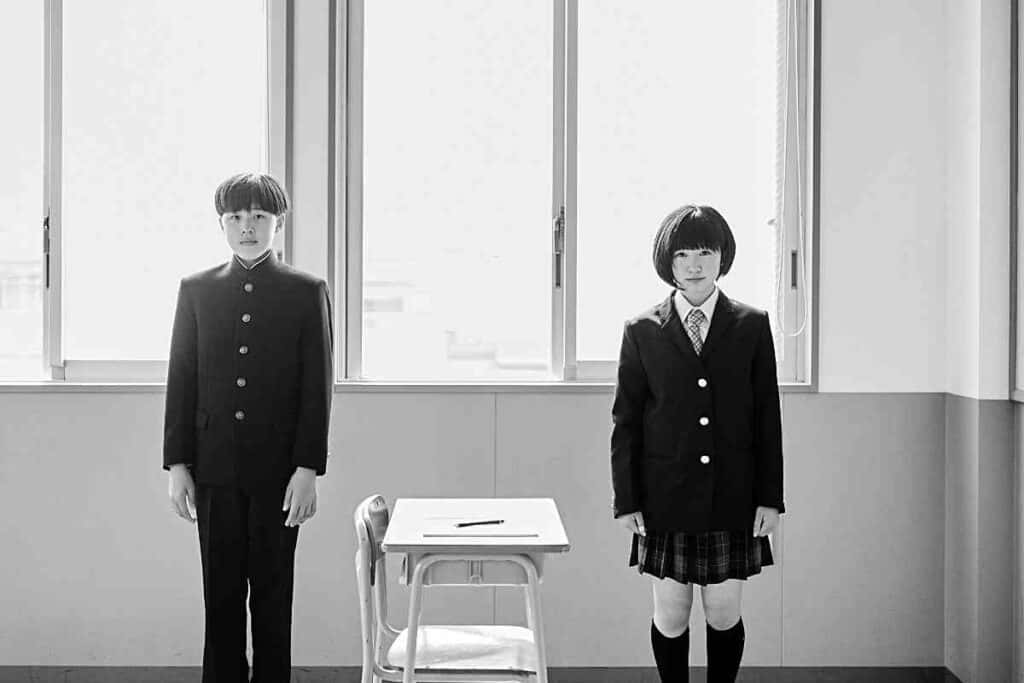
Around this time the government started to encourage the wear of Western clothing as a symbol of modernity.
In the early 20th century, school uniforms became widely adopted in Japan. Starting the trend, the Tokyo Women’s Normal School was the first to require uniforms.
In 1886 the rules were officially adopted, requiring students to wear navy blue kimonos with white collars and cuffs.
Gradually, school uniforms became more standardized. During World War II, the government directed all students to wear military-style uniforms as a sign of loyalty to the state.
School Uniform in the Modern Era
In modern Japan, School uniform is strictly enforced and is mandatory for most students attending both private and public schools.
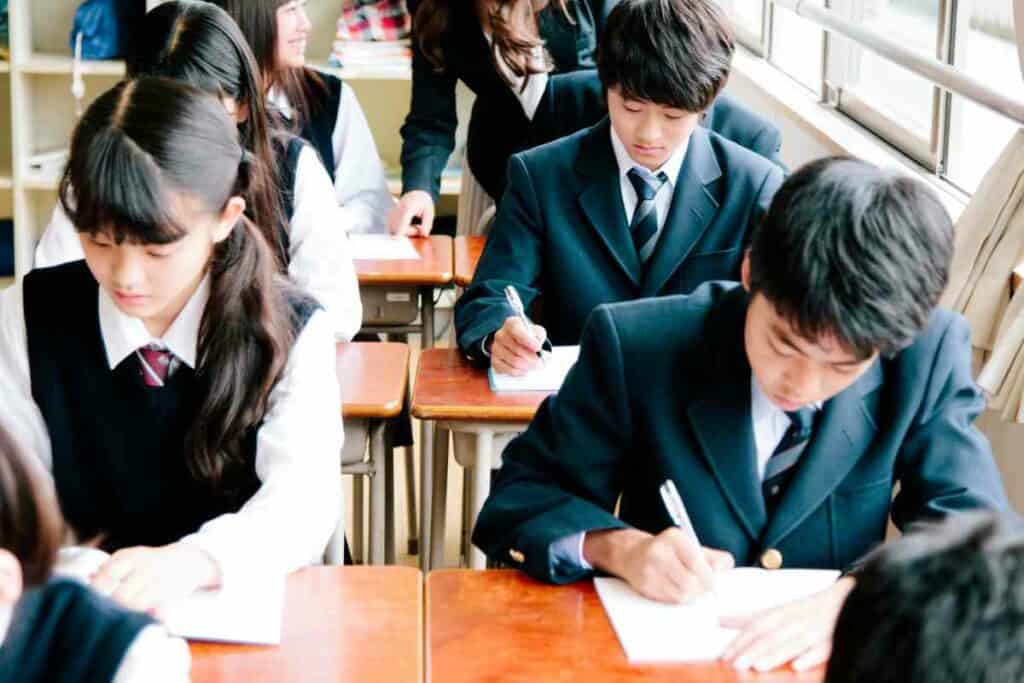
It is believed that wearing a school uniform brings a sense of equality and unity to school life.
Some common features of Japanese school uniforms are:
- Hair and makeup: Hair is expected to be kept neat and tidy. It should not be dyed in unnatural colors. Heavy makeup is forbidden, light makeup is allowed as long as it is natural.
- Coat and outerwear restrictions: Wearing jackets or coats over uniforms in school is not allowed. Only school-approved outerwear is permitted.
- Gender-specific uniforms: There are usually different designs of uniforms for boys and girls. These may vary in color and style, for example, boys may wear dark-colored trousers, and girls may wear a tartan-style pleated skirt.
- Traditional look: Japanese school uniform is commonly a blazer with matching pants or skirt. This is usually dark blue or black. Skirts are often knee-length and are a pleated style.
- Accessories: In some schools, it’s a requirement to wear accessories such as a tie, ribbons, or black shoes.
The Dress Code for Girls
Japanese schools generally require girls to wear a sailor-style uniform. This consists of a white blouse with a sailor collar, a pleated skirt, knee-high socks, and black shoes.
Skirt length is set by the Ministry of Education, Culture, Sports, Science and Technology (MEXT). They provide recommendations for schools; however, it is not mandatory to stick to these.
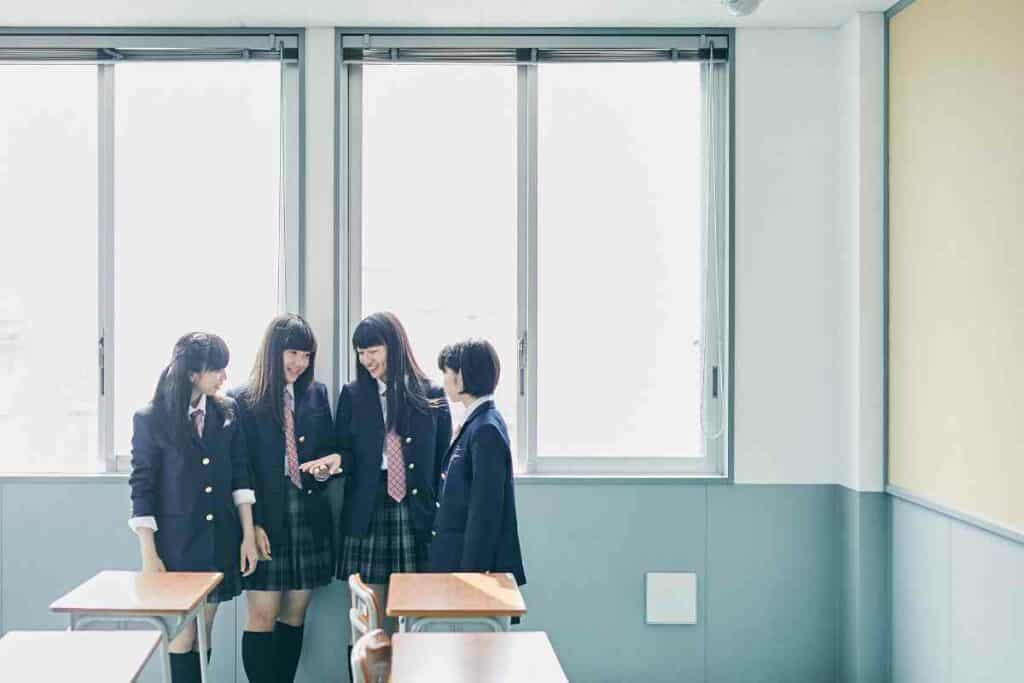
MEXT guidelines state that skirts should cover the knee when standing upright. Some schools will allow slightly shorter skirts, as long as the length is not too revealing.
In general, Japanese high schools tend to have stricter dress codes compared to other countries. Students are expected to dress modestly and neatly.
Different schools may have slightly different variations, but navy blue and white are the most common colors.
It’s also common for some schools to have summer and winter uniforms, which are designed to be worn during different seasons.
Many schools require girls to tie their hair up in a specific way, usually a ponytail or a bun.
Hair accessories such as ribbons or headbands are usually allowed, but they must be plain and in a specific color. Often the school will require students to wear their own school-approved accessories.
You may also like ?
Makeup and jewelry are generally not allowed in Japanese schools, small stud earrings and a wristwatch are acceptable, but anything too flashy is forbidden. Nail polish is also not allowed.
Some schools may have more relaxed dress codes or allow slight changes in the uniform, but in general, the dress code in Japan is taken seriously and is strictly enforced by school staff.
The Dress Code for Boys
Boys are expected to wear smart trousers, or shorts, depending on the time of year. In warmer months, it is acceptable for boys to wear a smart pair of shorts in place of trousers.
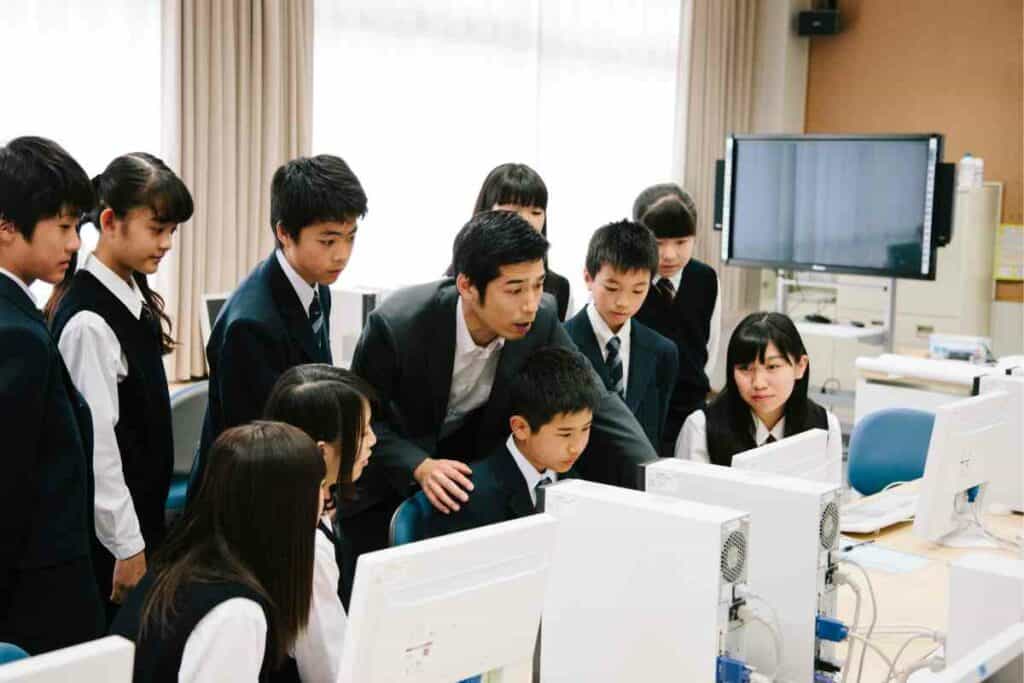
The color and design of these can vary between schools, but will usually be either black, navy, or dark grey.
Boys’ hairstyles are to be short and neatly groomed. Unusual hairstyles, hair dye, or excessive facial hair are not allowed. Hair must be neatly groomed at all times.
As for girls, jewelry is not permitted, except for a simple watch and a plain ring. Any flashy jewelry is seen as inappropriate and would have to be removed.
Shoes must be kept clean and polished. They must match the color of the uniform. Casual shoes, such as sneakers, are not permitted.
In Physical Education (PE) students are typically required to wear a specific uniform for these classes.
This will usually be shorts, and a t-shirt or jersey. Sports-branded wear is not permitted at all.
Elementary School
Typically, elementary school students will wear a sailor-style uniform. This could consist of a white shirt with a sailor collar and a pleated skirt or shorts.
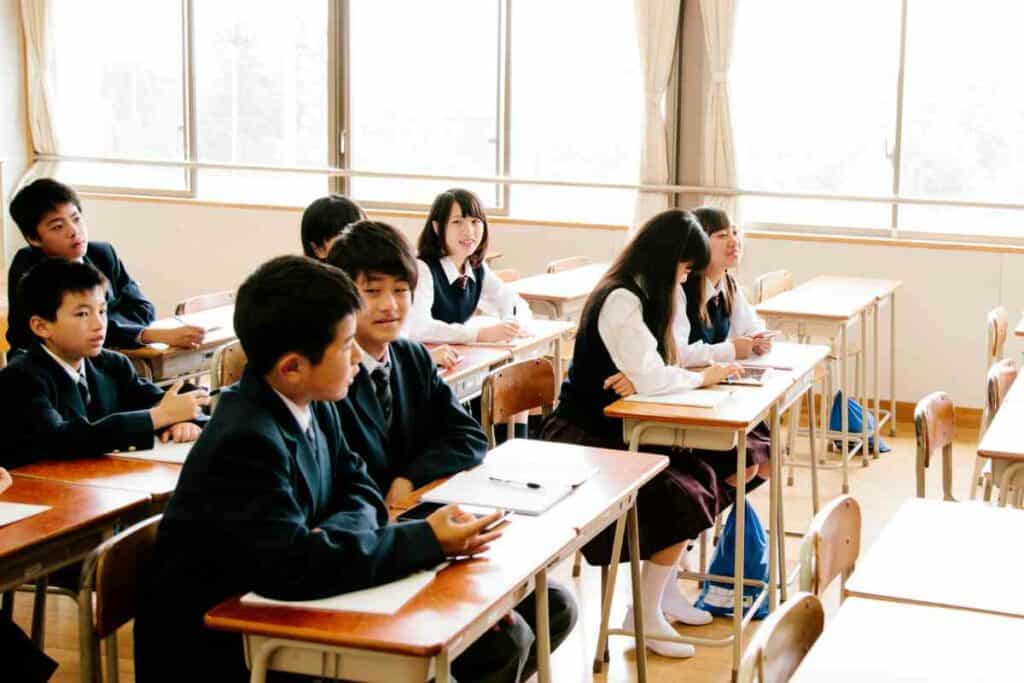
The color of the uniform will vary depending on the school. The most common colors are navy blue and white. The emphasis at this young age is simplicity and practicality.
It’s important the uniform can be washed and dried easily, making cotton and polyester popular material choices for uniforms.
Some schools request that students wear indoor shoes (slippers) known as uwabaki to keep the classrooms clean and hygienic.
During certain activities, it may be a requirement that students wear a specific hat or cap.
For example, on a field trip, students may all have to wear the same cap. This makes it easier to spot the school group as a whole and makes it easier to keep track of students.
Junior High School
A junior high uniform is typically a blazer-style jacket with matching pants or a skirt. There will be variations in uniform depending on the area and the school, but generally, colors will stick to the same palette of dark blue, black, and grey.
As in elementary school, uwabaki are popular and are seen as an easy way to keep clean floors.
Some schools may relax their uniform rules for special days, such as the last day of term, but others do not. It’s important to check the rules of each individual school.
High School
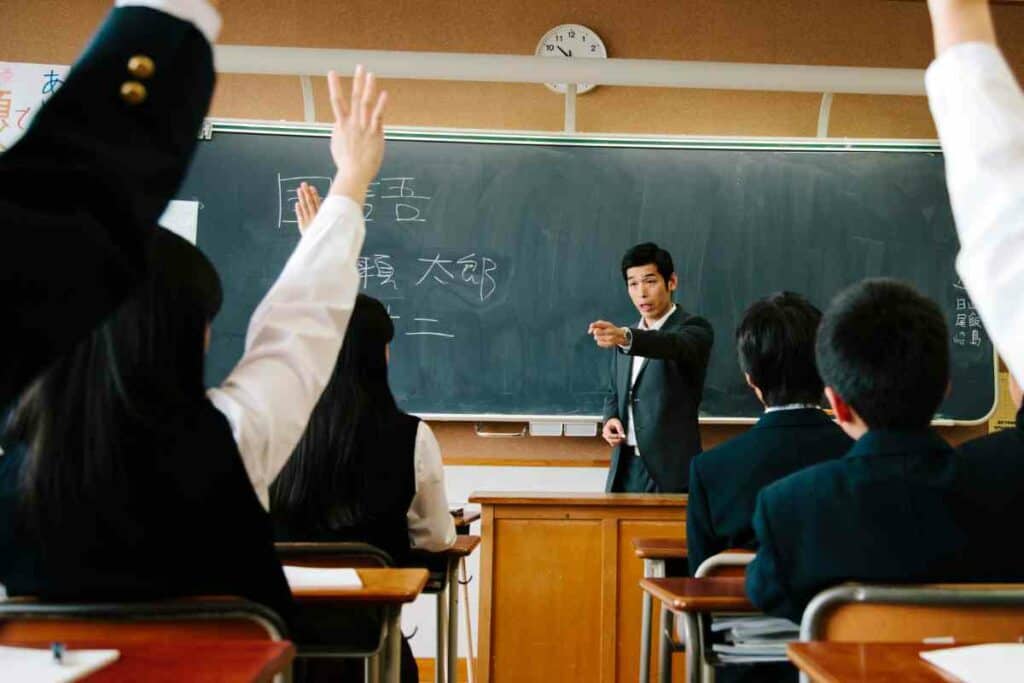
High school uniform is very similar to junior high uniform.
There may be allowances for more casual clothing on sports days or days of cultural significance.
Uwabaki are commonly worn in high schools also. These are typically lightweight and easy to slip on and off. Some schools may provide their own uwabaki, whereas some schools require students to bring their own.
Uwabaki are usually kept in lockers near the entrance of the school.
Accessories
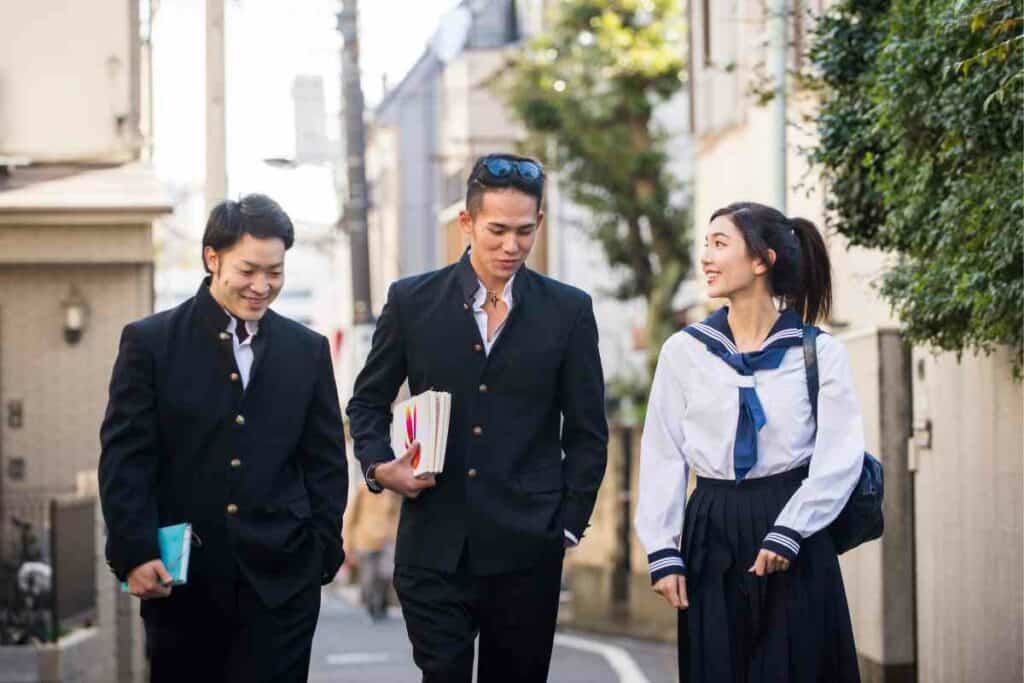
Popular accessories worn by Japanese students are:
- Hats: Hats are generally not permitted. On field trips, students may be required to wear a plain cap, and the same applies to sporting events.
- Bags: Usually only school-approved bags are permitted. Any bags with a sports or designer logo are prohibited.
- Watches: Are permitted if they are simple and not too flashy.
- Hair accessories: Simple hair accessories are allowed, such as a plain hair tie or pin. Distracting hair accessories are not allowed, such as bright, heavy designs or bows.
Shoes
Black, formal leather shoes with no logos or branding are the most popular choices for schools in Japan.
It’s important the shoes can be cleaned and polished easily as they must always be clean and well looked after.
Some schools may allow slight variations on these, such as slip-on shoes, or a loafer style shoe. But these must remain formal in appearance.
Sports shoes are allowed for sports classes or sporting events, but these are usually school-approved sneaker-style shoes.
Any logos or designer brands are not permitted. These shoes are never to be worn alongside the regular school uniform.
Hair Styles
In Japan, the strict dress codes even extend to hairstyles.
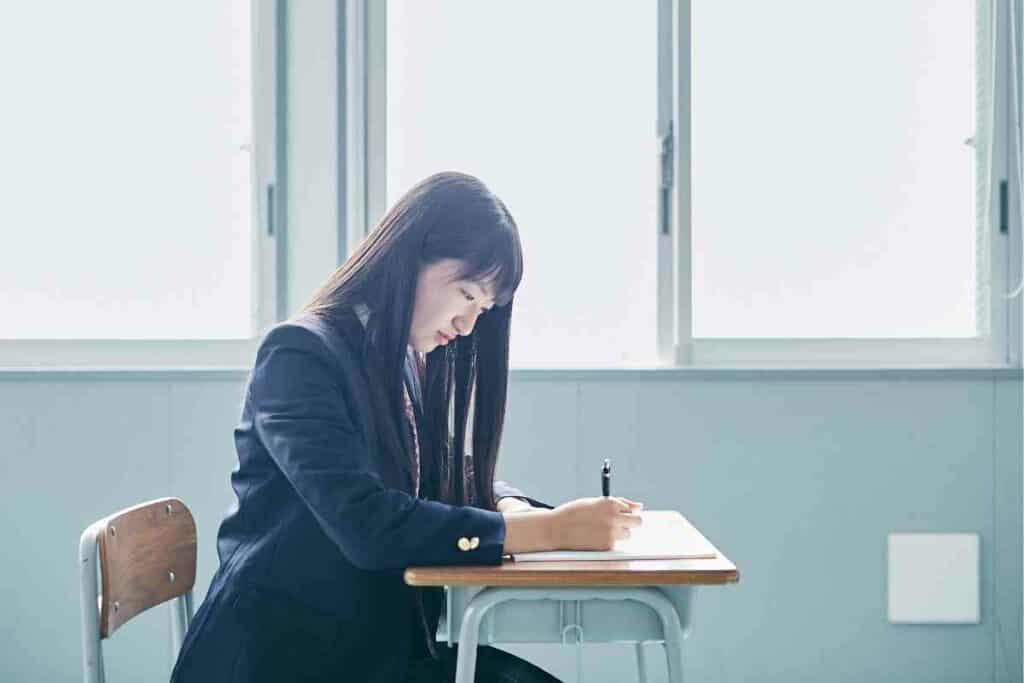
Some common rules for hairstyles are:
- Bangs: It’s common for students to only be allowed bangs up to their eyebrows, however, some schools will allow longer bangs.
- Hair styling products: Some schools do not allow the use of hair gel. This may be allowed if only a small amount is used, and the hairstyle is tasteful and in line with the school regulations.
- Hair colors: Unnatural hair colors are not allowed. Some schools will allow highlights, as long as they are minimal and within a range of natural hair colors.
- Hair length: Boys’ hair is usually required to be short and neat. Girls’ hair is typically shoulder length or longer and is to be kept neat and tidy.
Final Thoughts on Japanese Dress Codes for Schools
While school uniforms are mandatory in Japan, it has recently been discussed that relaxing the dress code will allow for more individual expression.
However, this is still a topic for debate, and opinions on this vary from school to school. Many people stand by Japanese school dress codes, valuing the sense of unity and equality it brings among students.
- 12 Things Tourists Should NEVER Say in Japan
- Kissing Robot: Exploring the Popularity of the Chinese Kissing App
- Unlocking the Secret Dating Rituals Only Locals Know in Japan
- Samurai Armor: Ancient Protection for Japan’s Elite Warriors
- 10 Amazing Facts About Schools in Japan: Unique Traditions and Educational Practices
- Where can you see snow monkeys in Japan: Best locations and viewing tips









